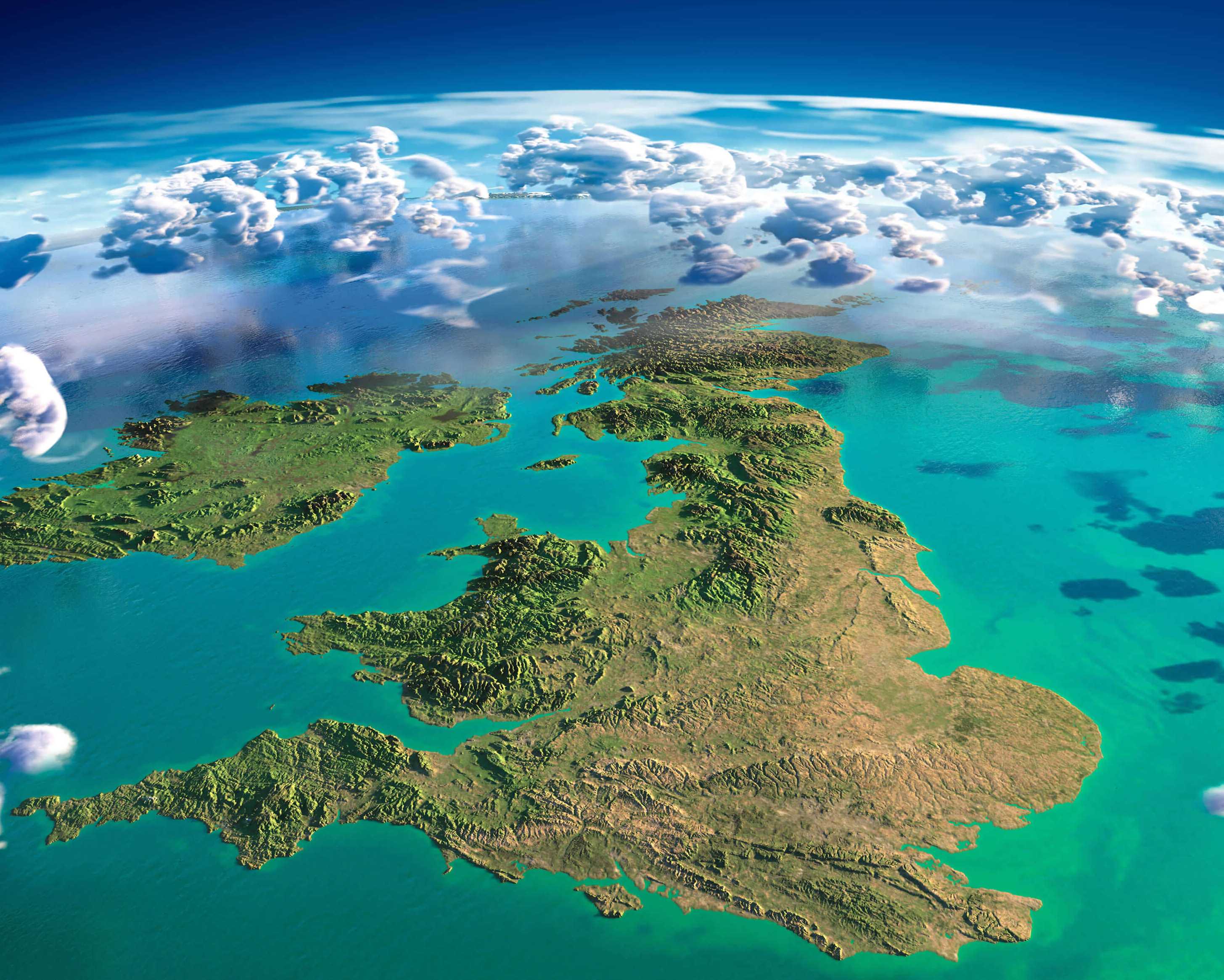 Here in Britain, as in all developed countries, we have land partly covered with our housing and infrastructure, large areas devoted to intensive agriculture, less convenient hilly or wet areas used for grazing livestock, and a relatively small remainder left, more or less, to Mother Nature.
Here in Britain, as in all developed countries, we have land partly covered with our housing and infrastructure, large areas devoted to intensive agriculture, less convenient hilly or wet areas used for grazing livestock, and a relatively small remainder left, more or less, to Mother Nature.  [Include data or pie-chart.] Civilisation has managed to keep things going so far, but we are now learning that we've got an urgent need to understand what Mother Nature is, and always has been, up to. It seems we may have gone altogether too far in ignoring the basic principles on which the whole earth system functions. Now there has come to be such an unbalanced preponderance of us humans that things are in danger of getting seriously out of kilter - the increasing losses and deaths from droughts, hurricanes, and floods both inland and at sea, all being attributed to climate change.
[Include data or pie-chart.] Civilisation has managed to keep things going so far, but we are now learning that we've got an urgent need to understand what Mother Nature is, and always has been, up to. It seems we may have gone altogether too far in ignoring the basic principles on which the whole earth system functions. Now there has come to be such an unbalanced preponderance of us humans that things are in danger of getting seriously out of kilter - the increasing losses and deaths from droughts, hurricanes, and floods both inland and at sea, all being attributed to climate change. In this programme we want to take a serious look at how natural systems function in a balanced way when given the chance, so that we can understand where best to look for climate change solutions. These are world-wide problems, of course, so where to start?
In this programme we want to take a serious look at how natural systems function in a balanced way when given the chance, so that we can understand where best to look for climate change solutions. These are world-wide problems, of course, so where to start? Much is made of the role played by tropical rainforests - the Amazon, central Africa, Indonesia and the rest. But we've a perfectly good rainforest here in Britain - temperate rainforest which functions in the same way as does the tropical equivalent.
Much is made of the role played by tropical rainforests - the Amazon, central Africa, Indonesia and the rest. But we've a perfectly good rainforest here in Britain - temperate rainforest which functions in the same way as does the tropical equivalent. 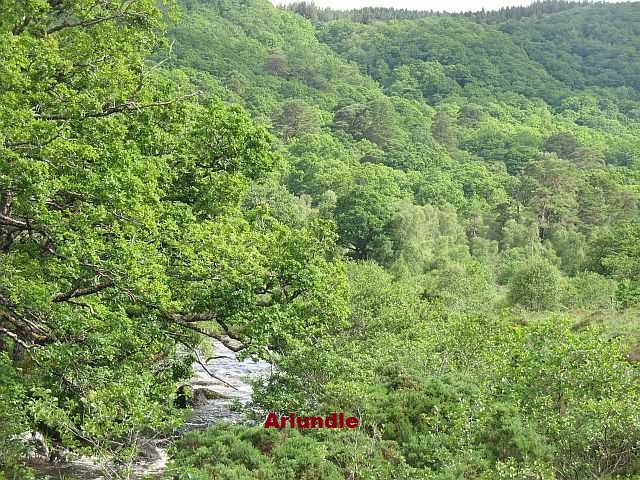 There's not much of it left, and it's not totally natural because we've long ago exterminated the large carnivore predators, but here in Ariundle near Strontian in Scotland [or Coed Felenrhyd near Maentwrog in Wales] is an area of abandoned, neglected, high rainfall woodland - no husbandry, no tidying, no planting, no harvesting, not by us humans anyway.
There's not much of it left, and it's not totally natural because we've long ago exterminated the large carnivore predators, but here in Ariundle near Strontian in Scotland [or Coed Felenrhyd near Maentwrog in Wales] is an area of abandoned, neglected, high rainfall woodland - no husbandry, no tidying, no planting, no harvesting, not by us humans anyway.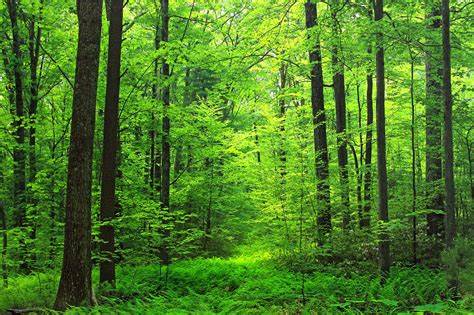 So how does it function? School biology taught us the basics - photosynthesis and all that. These leaves, whether flat and leaf-shaped, perhaps grassy strap-like, or needle-shaped - in fact all the green things including mosses, lichens and even the algae living on almost any surface such as tree bark - anything here that's green is green because it contains chlorophyll.
So how does it function? School biology taught us the basics - photosynthesis and all that. These leaves, whether flat and leaf-shaped, perhaps grassy strap-like, or needle-shaped - in fact all the green things including mosses, lichens and even the algae living on almost any surface such as tree bark - anything here that's green is green because it contains chlorophyll. 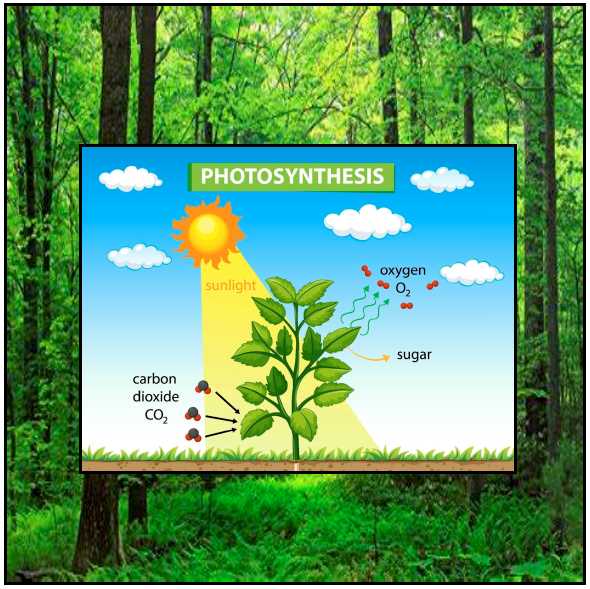 Just for the record, many things in nature that are not green contain chlorophyll too, masked by other pigments, such as copper beech leaves and brown seaweeds. Then, given enough daylight, ideally actual sunlight, the almost unique chemistry of chlorophyll allows it to take carbon dioxide gas - that's the dreaded CO2 - it takes carbon dioxide from the atmosphere and uses it to make complex organic compounds - simple sugars first of all, which the host plants can then use as the basis for more complicated compounds like proteins and fibre.
Just for the record, many things in nature that are not green contain chlorophyll too, masked by other pigments, such as copper beech leaves and brown seaweeds. Then, given enough daylight, ideally actual sunlight, the almost unique chemistry of chlorophyll allows it to take carbon dioxide gas - that's the dreaded CO2 - it takes carbon dioxide from the atmosphere and uses it to make complex organic compounds - simple sugars first of all, which the host plants can then use as the basis for more complicated compounds like proteins and fibre.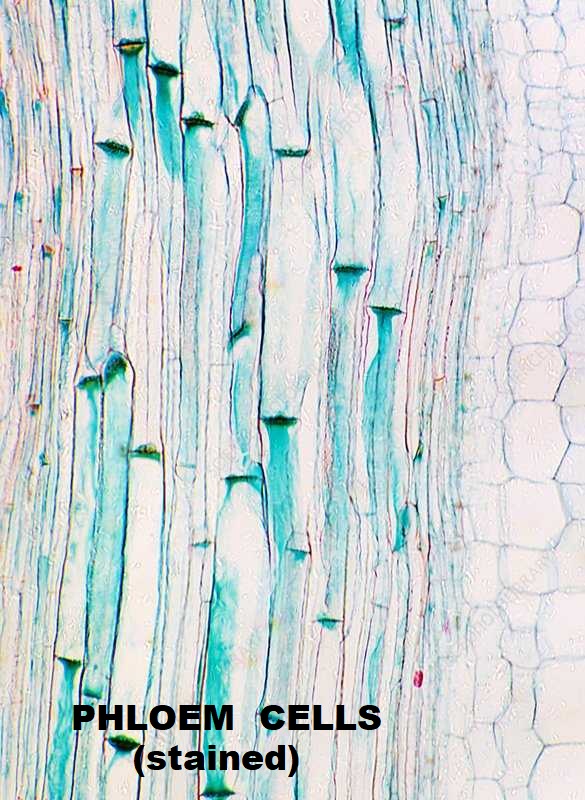
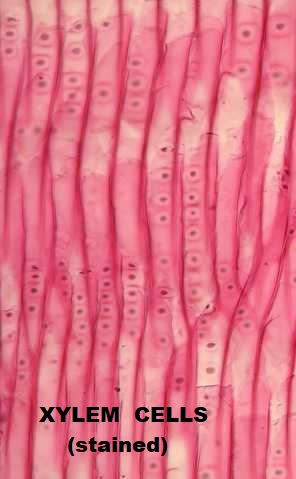 Then how do the sugars get moved to other parts of the plant - even down to roots in most cases? The quick answer is that as they're dissolved in the sap they can be carried about to branches, to fruits and to roots in specially designed tube cells making up what botanists call the phloem tissue. Incidentally, while all this is taking place, carbon dioxide going in, oxygen being given off, the poor plant suffers an unfortunate loss of water vapour too. So there's another system of so-called xylem tubes bringing water UP from the roots to compensate. That's why you have to keep your house-plants and summer garden well watered. But much more significantly, what happens as a tree gets older and grows in three dimensions - four if you're a purist - what happens is that the innermost xylem strands are dispensed with, clog up mainly with lignin, and thus form the so-called heart-wood of timber. So that's the chief tissue bringing about carbon fixation and storage.
Then how do the sugars get moved to other parts of the plant - even down to roots in most cases? The quick answer is that as they're dissolved in the sap they can be carried about to branches, to fruits and to roots in specially designed tube cells making up what botanists call the phloem tissue. Incidentally, while all this is taking place, carbon dioxide going in, oxygen being given off, the poor plant suffers an unfortunate loss of water vapour too. So there's another system of so-called xylem tubes bringing water UP from the roots to compensate. That's why you have to keep your house-plants and summer garden well watered. But much more significantly, what happens as a tree gets older and grows in three dimensions - four if you're a purist - what happens is that the innermost xylem strands are dispensed with, clog up mainly with lignin, and thus form the so-called heart-wood of timber. So that's the chief tissue bringing about carbon fixation and storage. 
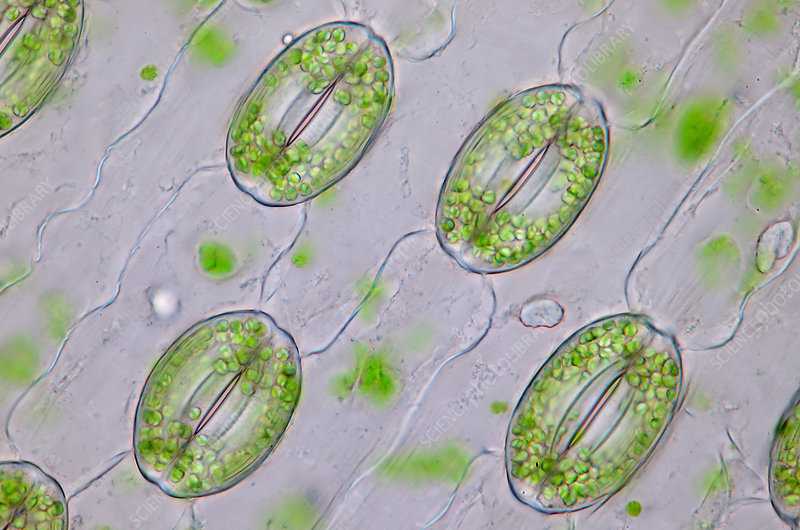 In Ariundle these photosynthesising green plants have to rely on rainfall of course - they won't be active during snow so that's not a problem. But in dry periods the small subjects like the algae and lichens simply stop functioning - they effectively hibernate until the next shower - while the trees can at least partially close up the pores on the undersides of leaves through which the gases and vapours normally pass. [More detail here?]
In Ariundle these photosynthesising green plants have to rely on rainfall of course - they won't be active during snow so that's not a problem. But in dry periods the small subjects like the algae and lichens simply stop functioning - they effectively hibernate until the next shower - while the trees can at least partially close up the pores on the undersides of leaves through which the gases and vapours normally pass. [More detail here?]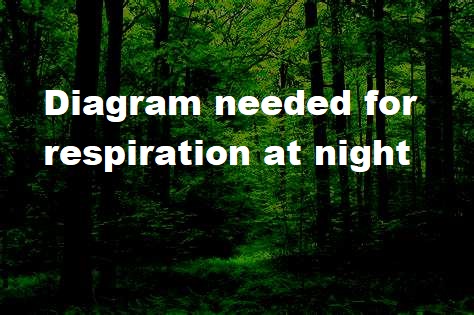 OK. So if virtually every living green thing is taking in CO2, effectively 'fixing' carbon out of the atmosphere, where's the problem? And the answer is that everything in nature is cyclic. Like every chemical, carbon takes part in a fundamental cycle. And like you and I, virtually every living thing breathes - to produce the energy it needs - giving OUT carbon dioxide in the process. And that includes all living GREEN things during the night.
OK. So if virtually every living green thing is taking in CO2, effectively 'fixing' carbon out of the atmosphere, where's the problem? And the answer is that everything in nature is cyclic. Like every chemical, carbon takes part in a fundamental cycle. And like you and I, virtually every living thing breathes - to produce the energy it needs - giving OUT carbon dioxide in the process. And that includes all living GREEN things during the night. So on the one hand Ariundle has a mixed variety of photosynthesising green plants fixing carbon during the days of a goodly proportion of the year. But the list of breathers - of creatures giving out CO2 - includes those plants at night; plus every squirrel and woodpecker and their relatives;
So on the one hand Ariundle has a mixed variety of photosynthesising green plants fixing carbon during the days of a goodly proportion of the year. But the list of breathers - of creatures giving out CO2 - includes those plants at night; plus every squirrel and woodpecker and their relatives;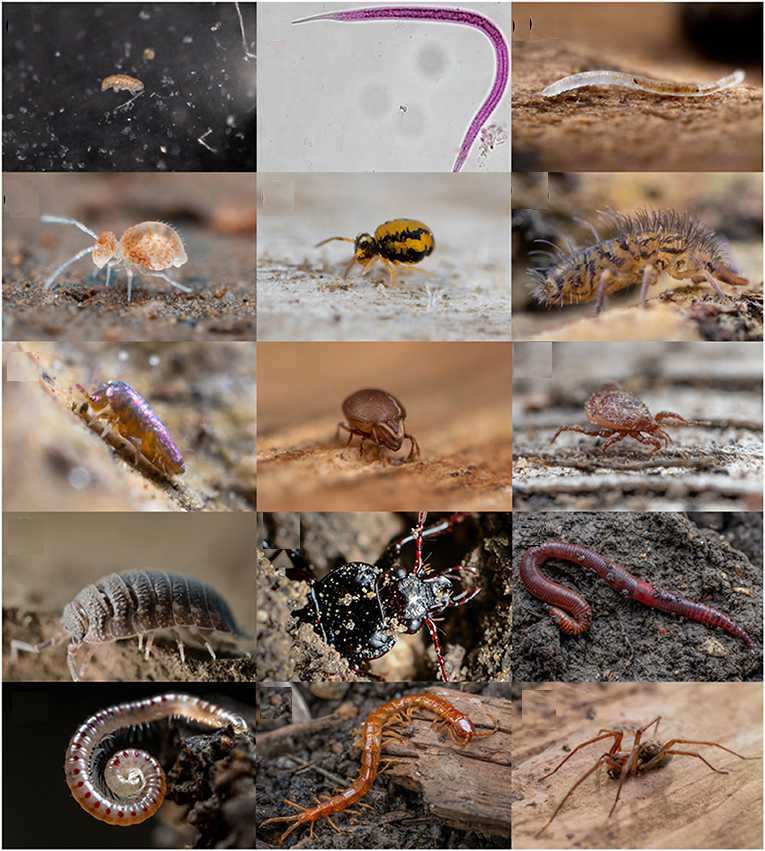 plus the untold thousands of invertebrates in the soil; plus the vast network of fungi in and on the soil responsible for rotting down and recycling all the dead plants and animals.
plus the untold thousands of invertebrates in the soil; plus the vast network of fungi in and on the soil responsible for rotting down and recycling all the dead plants and animals.| DAY | NIGHT | |
| Carbon dioxide CO2 | Taken in for photosynthesis | Given off in respiration |
| Oxygen gas O2 | Given off by photosynthesis | Taken in for respiration |
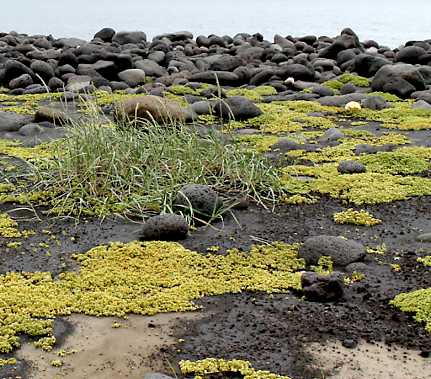 Perhaps the easiest example to think about is Surtsey, a new volcanic island that erupted from the mid-Atlantic ridge south of Iceland in 1963. We are all familiar with one type of so-called 'primary coloniser', as our nice bright new garden paving slabs gradually acquire first microscopic and then larger, mossy vegetation. This was supplemented on Surtsey by the visits of sea birds, bringing with them the inevitable guano and accidental seeds so that organic matter accumulated in pockets. Flying insects and wind-blown seeds arrived too, and some organisms will have landed as coastal jetsam along any strandline. Soon grasses were thriving among the mosses and lichens - a garden for authorised researchers to record in detail.
Perhaps the easiest example to think about is Surtsey, a new volcanic island that erupted from the mid-Atlantic ridge south of Iceland in 1963. We are all familiar with one type of so-called 'primary coloniser', as our nice bright new garden paving slabs gradually acquire first microscopic and then larger, mossy vegetation. This was supplemented on Surtsey by the visits of sea birds, bringing with them the inevitable guano and accidental seeds so that organic matter accumulated in pockets. Flying insects and wind-blown seeds arrived too, and some organisms will have landed as coastal jetsam along any strandline. Soon grasses were thriving among the mosses and lichens - a garden for authorised researchers to record in detail. A quick look at the Sonoran Desert of south-west USA reveals no trees at all. The largest living things are the saguaro cacti with other smaller cacti and the occasional tough creosote or sage bush. But as with the rainforest, all the carbon fixed by the green plants is recycled back to CO2 through the activities of the hoards of ants and plentiful other insects, larger creatures up to coyotes, plus soil invertebrates and fungi. Fungi don't really thrive in the dry conditions, but almost every dead item is food for some living creature, leaving minimal residues for the fungi and bacteria to snack on when they can. So this desert is another steady state community, established aeons ago and so balanced as to be able to continue indefinitely. All carbon is re-used, so the whole system is carbon neutral.
A quick look at the Sonoran Desert of south-west USA reveals no trees at all. The largest living things are the saguaro cacti with other smaller cacti and the occasional tough creosote or sage bush. But as with the rainforest, all the carbon fixed by the green plants is recycled back to CO2 through the activities of the hoards of ants and plentiful other insects, larger creatures up to coyotes, plus soil invertebrates and fungi. Fungi don't really thrive in the dry conditions, but almost every dead item is food for some living creature, leaving minimal residues for the fungi and bacteria to snack on when they can. So this desert is another steady state community, established aeons ago and so balanced as to be able to continue indefinitely. All carbon is re-used, so the whole system is carbon neutral. Very different in many respects, back home in the UK, is Scotland's Flow Country, up north in what is curiously named Sutherland. A super-abundance of water. No intolerable summer heatwaves. And vegetable material does NOT disappear - it accumulates. Surface waterlogging gives rise to a positive feed-back loop.
Very different in many respects, back home in the UK, is Scotland's Flow Country, up north in what is curiously named Sutherland. A super-abundance of water. No intolerable summer heatwaves. And vegetable material does NOT disappear - it accumulates. Surface waterlogging gives rise to a positive feed-back loop. 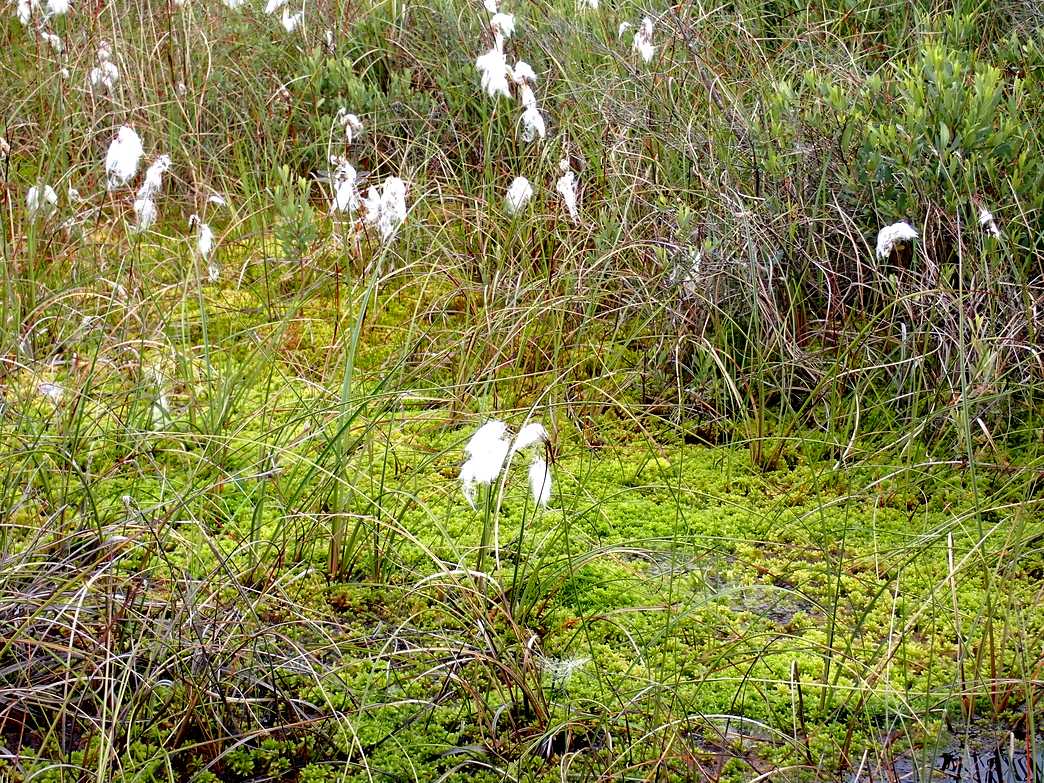 The chilly, wet conditions slow down any rotting so much that in fact it stops at an early stage, and the whole thing turns acid - effectively preventing any development by fungi and bugs. There's no succulent growth of plants - but the sphagnum and the few other kinds that can tolerate the conditions do manage to produce a bit of vegetation and flowers each year. And then, since it can't rot properly, most of it simply accumulates as peat. So that really IS carbon capture - photosynthesis building stuff up which simply stays there - indefinitely.
The chilly, wet conditions slow down any rotting so much that in fact it stops at an early stage, and the whole thing turns acid - effectively preventing any development by fungi and bugs. There's no succulent growth of plants - but the sphagnum and the few other kinds that can tolerate the conditions do manage to produce a bit of vegetation and flowers each year. And then, since it can't rot properly, most of it simply accumulates as peat. So that really IS carbon capture - photosynthesis building stuff up which simply stays there - indefinitely.
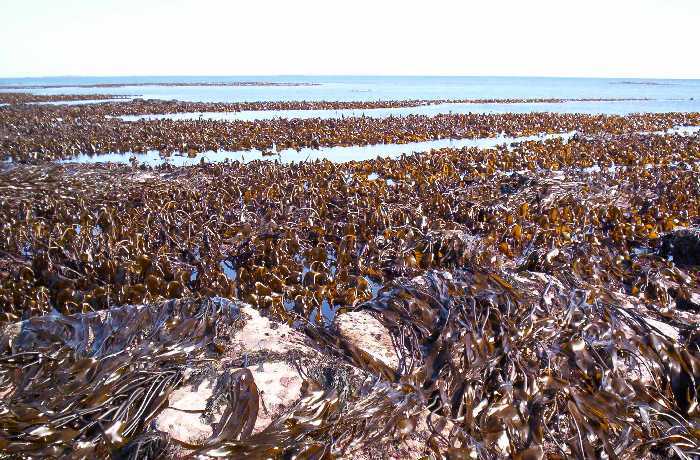 Another change of scene. What about the sea? Well, there are communities called forests there too - kelp forests. They occur almost always and only in temperate seas at pretty much the deepest coastal depths that provide enough light for plants to thrive, as here off the Northumberland coast.
Another change of scene. What about the sea? Well, there are communities called forests there too - kelp forests. They occur almost always and only in temperate seas at pretty much the deepest coastal depths that provide enough light for plants to thrive, as here off the Northumberland coast.  Apart from their much shorter individual life spans, always less than ten years, kelp forests parallel rainforests - major seasonal photosynthesis making use of dissolved CO2 and recharging vital oxygen for the fish; hosting a range of parasitic and symbiotic life forms; with every living thing eventually dying and its substance being used as food by grazers or carnivores, by minor invertebrates or bacteria. So kelp forests, too, are steady state ecosystems, and are carbon neutral - even if some of the recycling takes place well away from the forest itself, as residues and organisms are wafted away on tidal and oceanic currents.
Apart from their much shorter individual life spans, always less than ten years, kelp forests parallel rainforests - major seasonal photosynthesis making use of dissolved CO2 and recharging vital oxygen for the fish; hosting a range of parasitic and symbiotic life forms; with every living thing eventually dying and its substance being used as food by grazers or carnivores, by minor invertebrates or bacteria. So kelp forests, too, are steady state ecosystems, and are carbon neutral - even if some of the recycling takes place well away from the forest itself, as residues and organisms are wafted away on tidal and oceanic currents.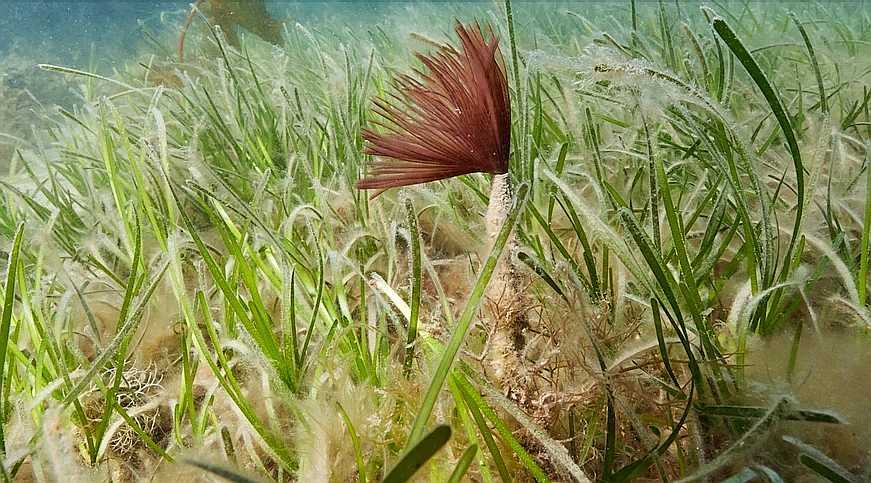 A word is needed concerning the more modest seagrass coastal communities. Much less common and in shallower waters, the meadows chiefly feature a small group of species looking much like modest farm grasses, producing flowers and seeds in due season, all under water.
A word is needed concerning the more modest seagrass coastal communities. Much less common and in shallower waters, the meadows chiefly feature a small group of species looking much like modest farm grasses, producing flowers and seeds in due season, all under water.  They are valued for stabilising sands and muds, and for providing a sheltered home for small sea creatures such as young fish and seahorses like this in Studland Bay, off the Dorset coast. There are schemes afoot for extending seagrass areas in suitable environments, such as the Seawilding project in Scotland's Loch Craignish.
They are valued for stabilising sands and muds, and for providing a sheltered home for small sea creatures such as young fish and seahorses like this in Studland Bay, off the Dorset coast. There are schemes afoot for extending seagrass areas in suitable environments, such as the Seawilding project in Scotland's Loch Craignish. Unfortunately, one seagrass survey took place adjacent to a saltmarsh that was being eroded. Large amounts of organic matter drifted onto the seagrass area, so that it seemed as if the seagrass was capturing and fixing large amounts of carbon, giving seagrass in general a wonderful but grossly over-blown reputation. It is true that any new meadows will fix carbon during all the establishment stages. But when it's fully mature, it can continue as a steady state community only when growth and decomposition balance each other out. It will be carbon neutral.
Unfortunately, one seagrass survey took place adjacent to a saltmarsh that was being eroded. Large amounts of organic matter drifted onto the seagrass area, so that it seemed as if the seagrass was capturing and fixing large amounts of carbon, giving seagrass in general a wonderful but grossly over-blown reputation. It is true that any new meadows will fix carbon during all the establishment stages. But when it's fully mature, it can continue as a steady state community only when growth and decomposition balance each other out. It will be carbon neutral.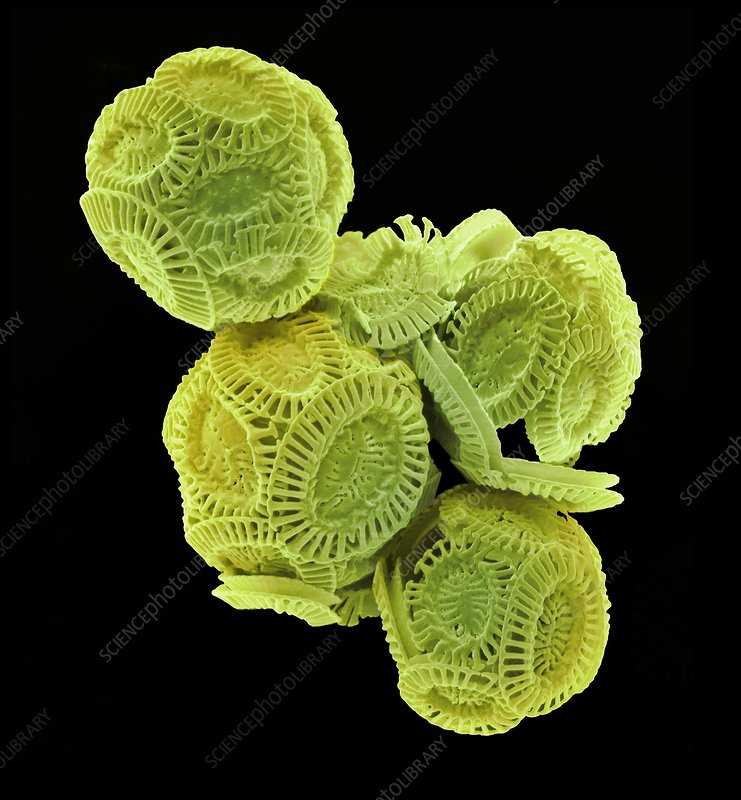 The primary producers in the oceans - the things that can make use of the chemicals in seawater - are the green phytoplankton micro-plants, some of which have chalky outer skeletons. Most of those are eaten by the scarcely larger zooplankton animals. The lucky ones of those that escape being eaten soon die and their bodies sink slowly to the sea floor, accumulating as a white or grey ooze. Now, the point is that chalky calcium carbonate contains carbon. And provided that sea floor is less than several kilometres deep that ooze stays put indefinitely. It will certainly be compressed by further layers falling on top over the ages. Then, depending on its geological destiny it may be changed into chalk or even into limestone - and THAT could even be metamorphosed into marble.
The primary producers in the oceans - the things that can make use of the chemicals in seawater - are the green phytoplankton micro-plants, some of which have chalky outer skeletons. Most of those are eaten by the scarcely larger zooplankton animals. The lucky ones of those that escape being eaten soon die and their bodies sink slowly to the sea floor, accumulating as a white or grey ooze. Now, the point is that chalky calcium carbonate contains carbon. And provided that sea floor is less than several kilometres deep that ooze stays put indefinitely. It will certainly be compressed by further layers falling on top over the ages. Then, depending on its geological destiny it may be changed into chalk or even into limestone - and THAT could even be metamorphosed into marble.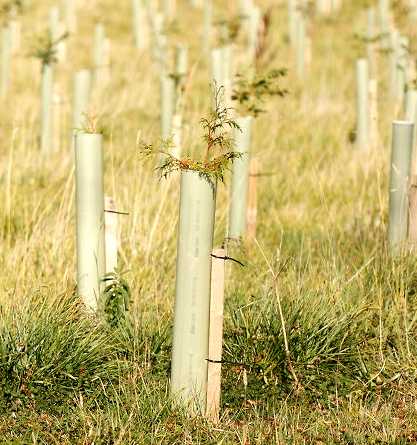 Back on land, and back to everyday questions of carbon processes, we should now be able to draw some conclusions. Returning to our forests, then, we know that MATURE NATURAL forest is carbon neutral. Tree planting helps fix atmospheric carbon by using up some CO2 from the atmosphere just so long as new wood is being accumulated - very slowly in any new plantation, then increasingly until full leaf cover intercepts all the available sunlight.
Back on land, and back to everyday questions of carbon processes, we should now be able to draw some conclusions. Returning to our forests, then, we know that MATURE NATURAL forest is carbon neutral. Tree planting helps fix atmospheric carbon by using up some CO2 from the atmosphere just so long as new wood is being accumulated - very slowly in any new plantation, then increasingly until full leaf cover intercepts all the available sunlight. 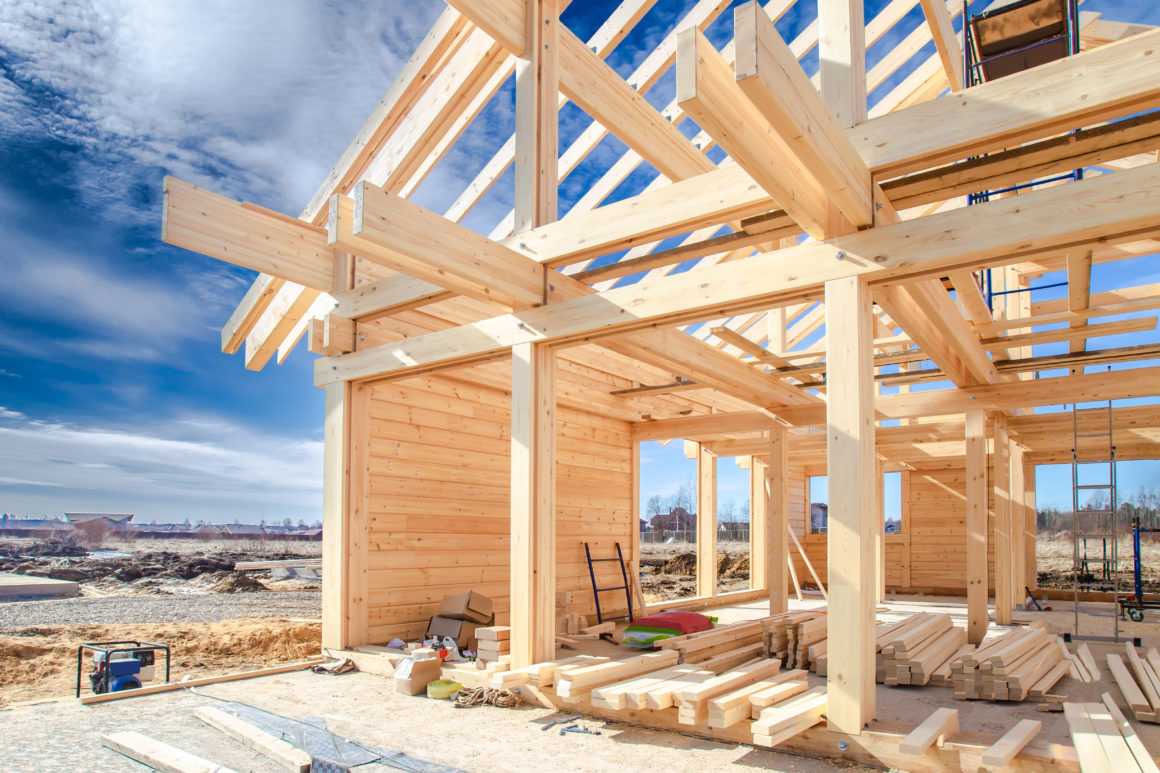 But beware! That CO2 will eventually find its way back into the atmosphere if the timber is used as fuel or for paper manufacture. Its ideal destiny is for building or furniture - as it is, or laminated into plywood, or shredded into wood wool, or whatever.
But beware! That CO2 will eventually find its way back into the atmosphere if the timber is used as fuel or for paper manufacture. Its ideal destiny is for building or furniture - as it is, or laminated into plywood, or shredded into wood wool, or whatever. So should we panic about destruction of the carbon-neutral rainforest? Yes of course. The very process of destruction, clearance, burning - call it what you will - releases a whole generation of trapped carbon, along with the inevitable smoke and air pollution, not to mention exposure to soil erosion and the loss of irreplaceable wildlife. But trees should, indeed be harvested - on a selective, extractive basis. After all, we don't want valuable timber rotting back to CO2.
So should we panic about destruction of the carbon-neutral rainforest? Yes of course. The very process of destruction, clearance, burning - call it what you will - releases a whole generation of trapped carbon, along with the inevitable smoke and air pollution, not to mention exposure to soil erosion and the loss of irreplaceable wildlife. But trees should, indeed be harvested - on a selective, extractive basis. After all, we don't want valuable timber rotting back to CO2.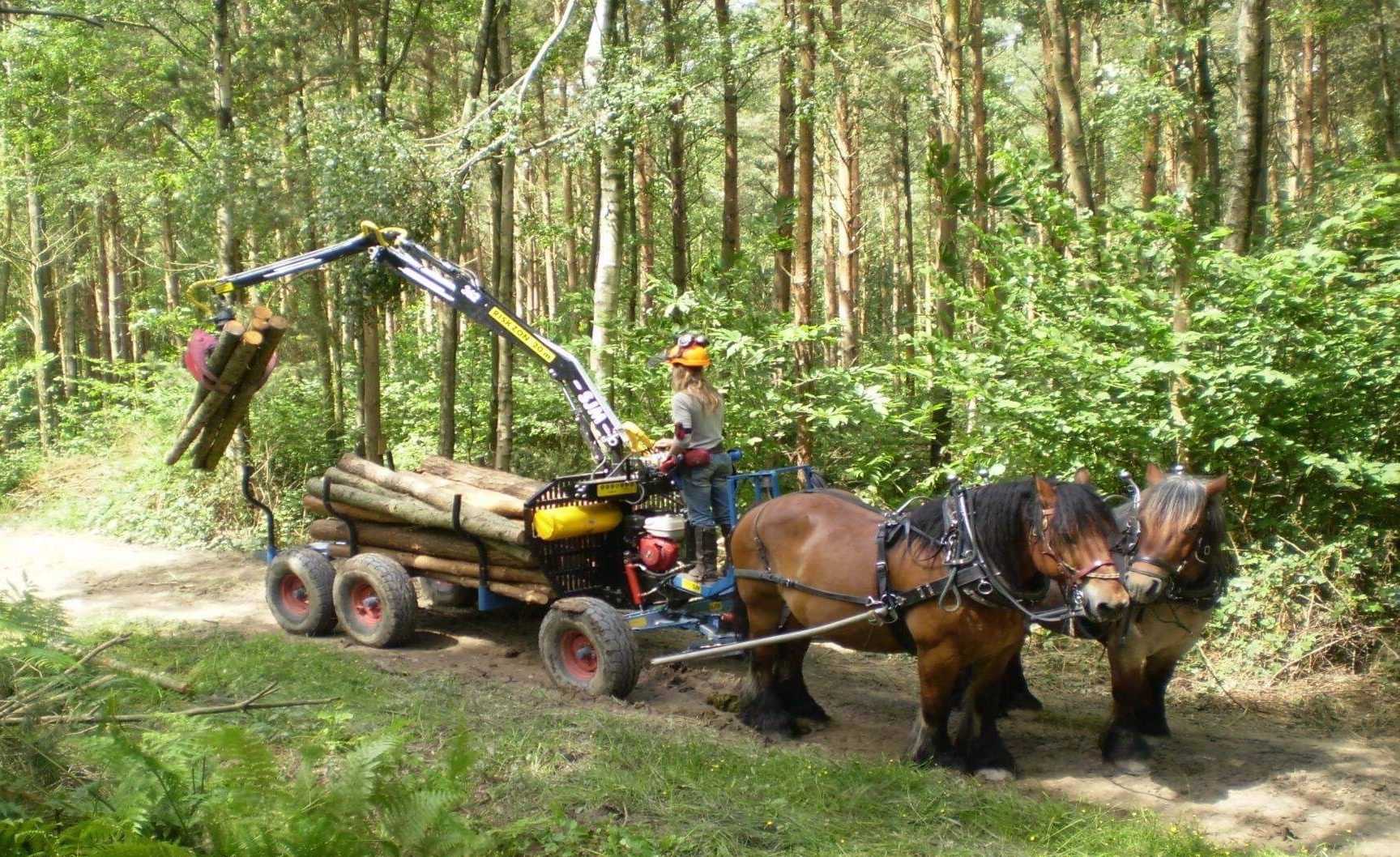 involve any smoke or, if carefully managed, any soil erosion. But it is, of course, totally unnatural - indeed against nature. Much better are the welcome moves towards mixed species of hardwoods and softwoods, and extractive harvesting, minimising the disturbance to wildlife and the whole ecosystem.
involve any smoke or, if carefully managed, any soil erosion. But it is, of course, totally unnatural - indeed against nature. Much better are the welcome moves towards mixed species of hardwoods and softwoods, and extractive harvesting, minimising the disturbance to wildlife and the whole ecosystem. Agriculture too, is unnatural, particularly in the twenty-first century's developed world. But we all need food. So is restorative or regenerative agriculture the solution? Bring back the unkempt hedgerows? Select livestock that don't belch methane?
Agriculture too, is unnatural, particularly in the twenty-first century's developed world. But we all need food. So is restorative or regenerative agriculture the solution? Bring back the unkempt hedgerows? Select livestock that don't belch methane? That idea can validly be extended: any husbandry system that has been or can be carried on indefinitely must necessarily be carbon neutral. So any 300-year-old hedge that is trimmed every year and re-layered twice a generation is carbon neutral. Hefting appropriate numbers of suitable livestock on hill and mountain pastures is carbon neutral. None of these systems can serve as carbon sinks. Restorative husbandries, moving the soil as little as possible, will undoubtedly boost the carbon content of that soil, but only to a higher, dynamic, balanced, carbon neutral level.
That idea can validly be extended: any husbandry system that has been or can be carried on indefinitely must necessarily be carbon neutral. So any 300-year-old hedge that is trimmed every year and re-layered twice a generation is carbon neutral. Hefting appropriate numbers of suitable livestock on hill and mountain pastures is carbon neutral. None of these systems can serve as carbon sinks. Restorative husbandries, moving the soil as little as possible, will undoubtedly boost the carbon content of that soil, but only to a higher, dynamic, balanced, carbon neutral level.